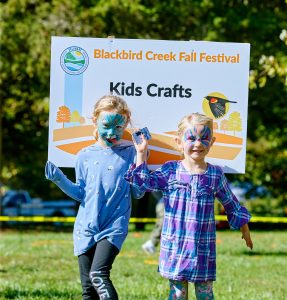Event Features Hands-on Activities, Food, Hayrides and More
Make plans now to attend the Delaware National Estuarine Research Reserve’s (DNERR) annual Blackbird Creek Fall Festival.
The festival, which is celebrating its 15th year, includes tractor-pulled hayrides, kids’ crafts, face painting and more. Families can participate in an estuary scavenger hunt by visiting each of the participating stations and learning about the natural resources and heritage of the Delaware Bay through games, demonstrations and challenges. Visitors may also browse the work of artisan vendors, grab something to eat from food trucks and listen to local musicians. Admission to the festival is free.
“Each year we look forward to collaborating with our community at the Blackbird Creek Fall Festival, and with this year marking the 15th annual festival, it makes it even more special,” said Laurel Sullivan, education coordinator at DNERR. “Our festival is the perfect opportunity for people to explore and celebrate the ecological services of the reserve.”
The Delaware National Estuarine Research Reserve, consisting of the Blackbird Creek Reserve in Townsend and the St. Jones Reserve in Dover, is part of a national system of reserves that protects more than 1.3 million acres of coastal land and water.
The festival will take place Saturday, Oct. 19 from 10 a.m. until 4 p.m., at the Blackbird Creek Reserve, 801 Blackbird Landing Road, Townsend.
More information on the Blackbird Creek Fall Festival is available online.
About DNREC
The Delaware Department of Natural Resources and Environmental Control protects and manages the state’s natural resources, protects public health, provides outdoor recreational opportunities and educates Delawareans about the environment. The DNREC Division of Climate, Coastal and Energy uses science, education, policy development and incentives to address Delaware’s climate, energy and coastal challenges. For more information, visit the website and connect with @DelawareDNREC on Facebook, Instagram, X (formerly known as Twitter) or LinkedIn.
Media Contact: Michael Globetti, Michael.globetti@delaware.gov or Jim Lee, JamesW.Lee@delaware.gov
###
